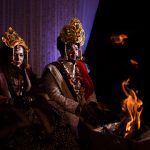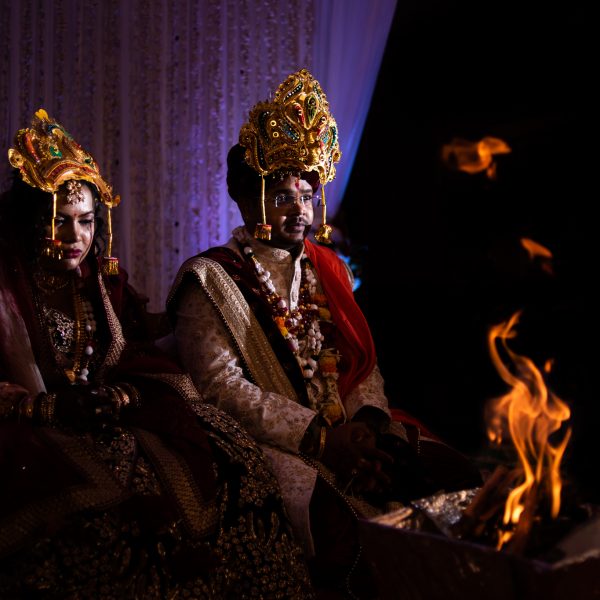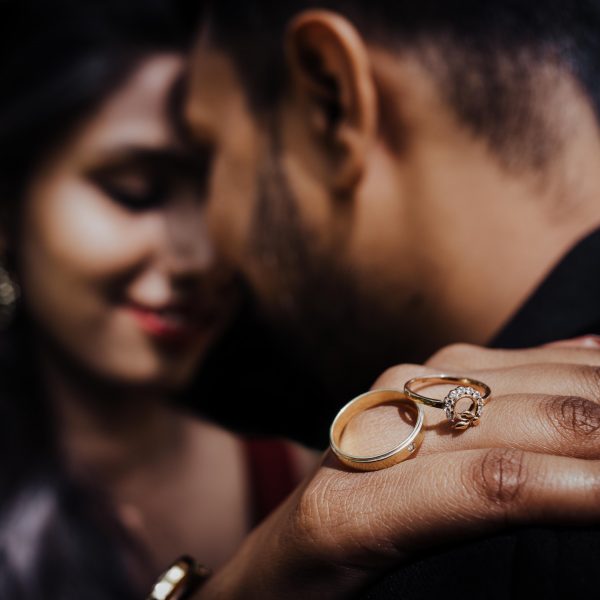In Odisha, winters are special because it is the time when one of the most beautiful and memorable events takes place. Yes, I’m talking about Odia weddings and Odia wedding rituals. There are smiles, laughter, food, music, and the time to enjoy the old forgotten customs and rituals.
Get Familiar with the Origin of Odia Wedding:
In India, you would find different kinds of marriages and their customs. One of them is certainly an Odia marriage that is also known as Bahaghara. Some specific customs and rituals are there in Odia marriage that make it quite unique and special too. In Odia weddings, religious devotion plays a huge part in the lives of Odia people. It is reflected very well in their wedding rituals.
Oriya Wedding ceremonies have been done in simple yet rich clothing. Generally, women wear sarees that are an amalgamation of South and Eastern-Indian styles, fabrics, and designs. With lavish use of extravagant artwork, including Zari, embroidery, and prints, the attire is accompanied by visually appealing accessories including head accessories, anklets, nose rings, earrings, and necklaces. Made from Georgette, chiffon, cotton or silk, these saris are mainly worn in rich, vibrant colors like red, orange or maroon to complement the skin of a bride and to reflect the vibrancy and richness of Indian culture.
The attire of the groom is as elaborate as that of the bride and the men wear beautiful dhotis and shoes.
Now quickly take a look at the rituals of a typical Odia wedding.
Pre-Wedding Customs and Rituals:
- Engagement or Nirabandha:
So, this is the very first function that happens at the bride’s place or in a temple. Here elders perform a puja for their kids and promise each other that the marriage is fixed. And after that, the girl and the boy exchange their rings.
- Badi-Jai Anukula:
This day is known as the starting of the wedding ceremony. Lord Jagannath, the supreme god of Odia people, is the person who gets the invitation card first. The second invitation is usually sent to the maternal uncle’s place on both sides. They send the invitation card along with coconut, betel leaf, and nuts for an auspicious start.
Wedding Rituals:
- Mangan:
In the presence of seven married women, the bride is bathed using seven kinds of water and haldi is smeared in her body and face. This ritual also represents the starting of wedding rituals.
- Barajatri or Barati:
On the day of the wedding, the groom leaves his place with his relatives and friends in a beautifully decorated car. Once the groom reaches the wedding venue, the father of the bride applies tilak of broken rice and vermilion paste on the forehead of the groom. Then his feet are washed using coconut water and he would be fed a mixture of curd, sugar, honey, and ghee, which is known as batabaran.
- Kanyadaan and Hastaganthi:
The father of the bride would give the hands of her daughter on the groom’s hand by putting a mixture of coconut milk, water, and rose petals called ‘Kanyadaan‘. In the Hastaganthi ritual, both of their hands would be tied with a flower garland. This represents that they are united forever.
- Sindoor Daan:
Not to mention, this is one of the most significant rituals for a girl when the man of her life offers her Sindoor. From that day onwards, they become husband and wife.
Many other rituals are there that are performed in Odia weddings. They are:
- Sala Bidha:
It is a fun ritual that doesn’t have a specific time or muhurat. In this ritual, the bride’s brother punches him mainly on his back. Although without too much force.
- Kaudi Khela:
It is a fun ritual where the bride hides a shell or kaudi in her fist. The groom needs to open it up with the help of his little finger only. In the next round, the bride tries to open the fist of the groom. It is said that if the bride wins the game, then she will dominate the married life and if the groom wins, then he will dominate the same.
- Bhara:
While the bride leaves her place, she carries bhara with her. The boxes of sweets include jilapi or jalebi, pheni, gaja, labanga lata, and enormous laddoos for her new family members, relatives.
Not to mention, marriage is not complete without bhoji, the grand feast. This includes an assortment of Odia non-vegetarian and vegetarian food items such as ambula rai, dahi baingan, fish curry, chingudi ghanta, along with sweets like paana, rabidi, kheeri, to name a few.
So, if you want to experience the true essence of Odia weddings, then attend one and explore the rich culture of Odisha.
Do check the Bengali wedding rituals
1 comment
Comments are closed.











Really, Its a very informational blog for Odia wedding rituals.